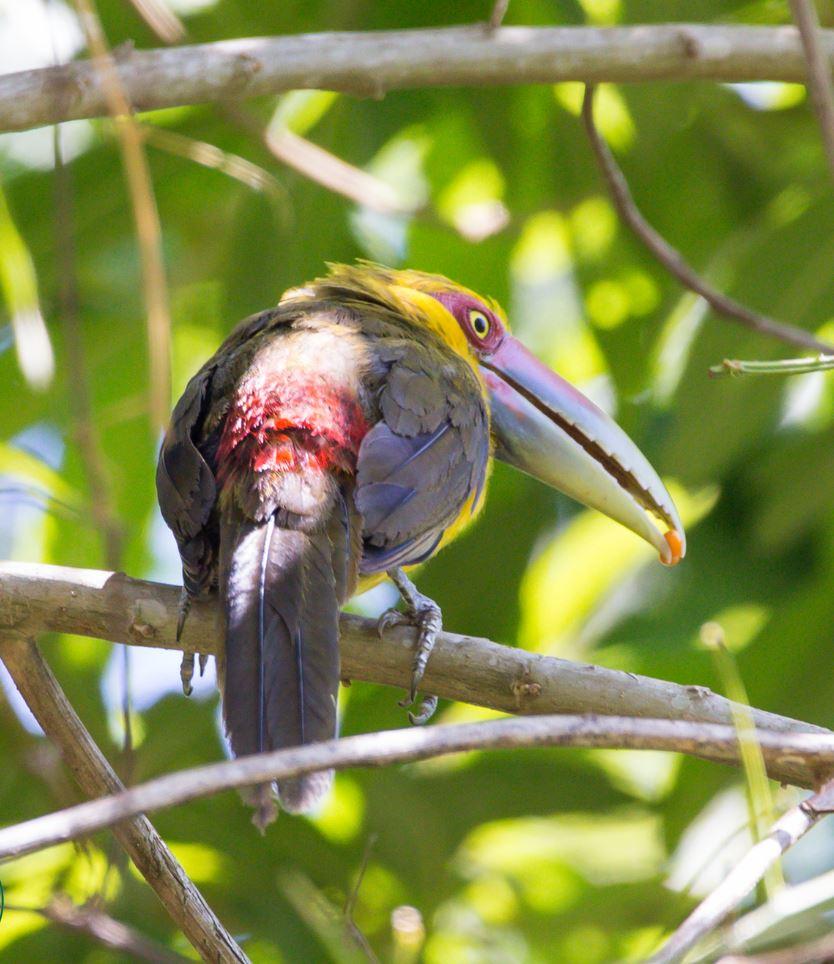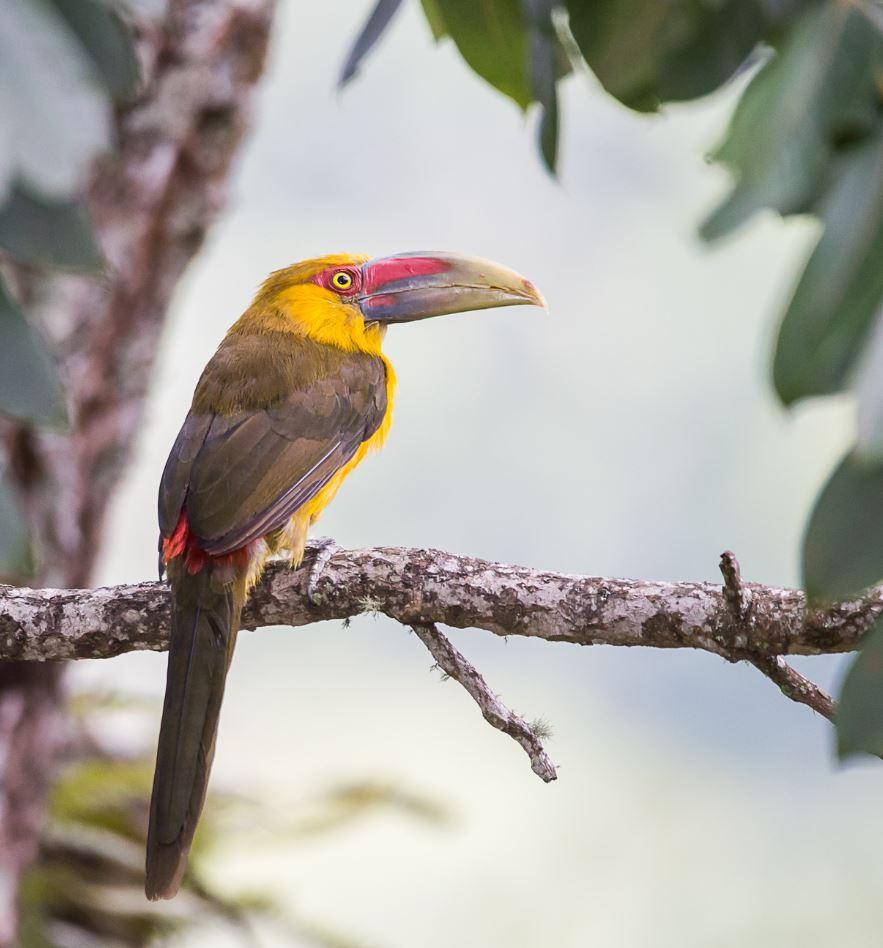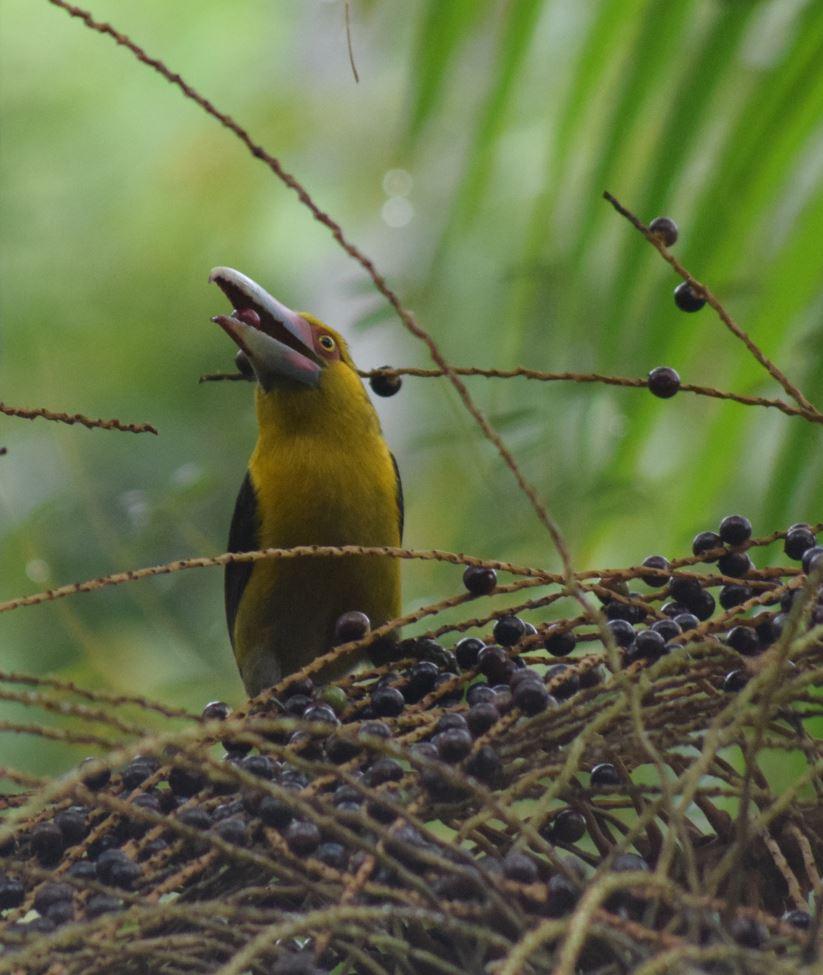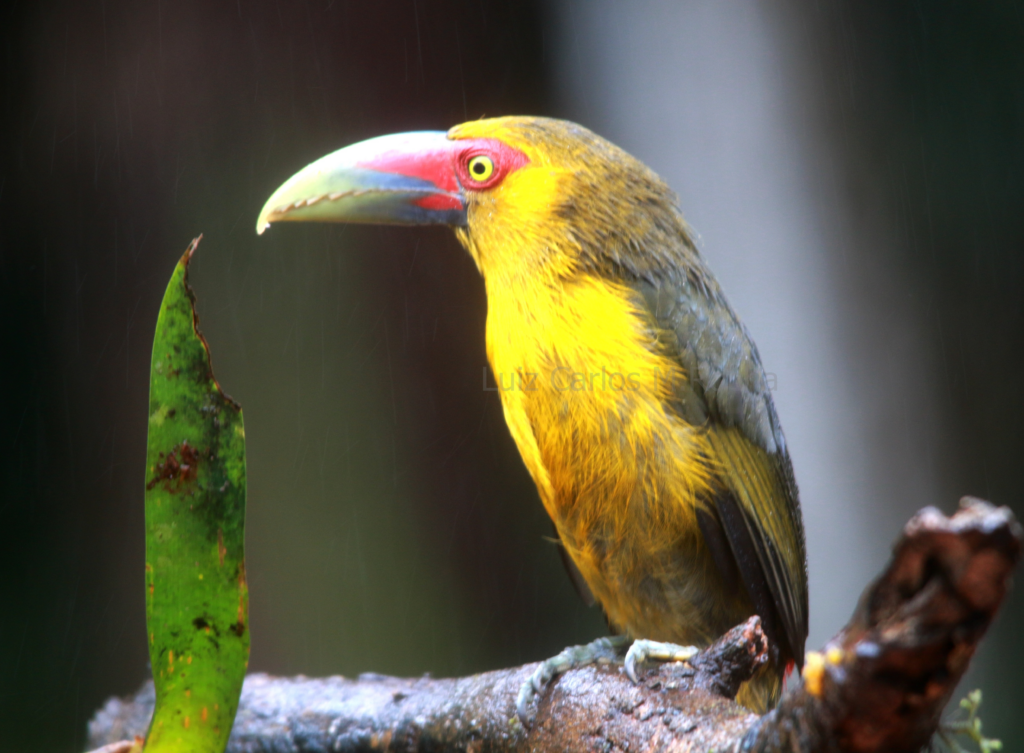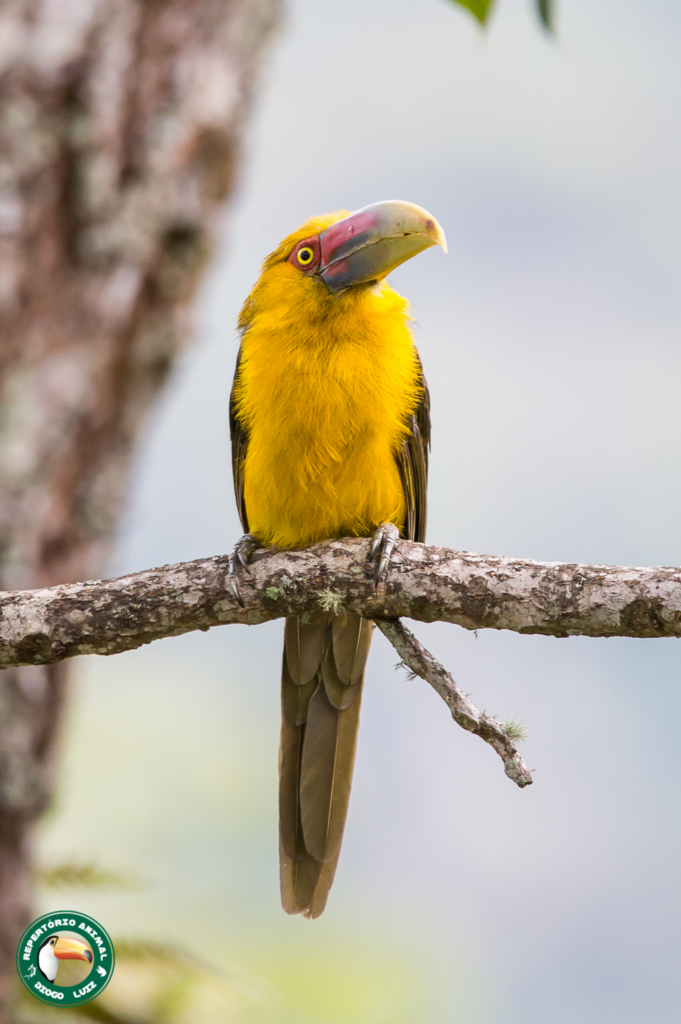A bird easily recognizable by its vibrant yellow plumage, its striking elongated beak exhibits a captivating bicolor pattern: half is red, while the other half glows a greenish-yellow hue.
Meet the saffron toucan:
“Saffron Tucaneto” by Diogo Luiz is licensed under CC BY-SA 4.0. (cut)
Description: The saffron toucan (Pteroglossus bailloni) is a relatively long-tailed toucan, measuring about 35 to 40 cm (14 to 16 in) in total length. Unique among toucans, its plumage is predominantly saffron yellow, while the back and tail show a deeper olive hue. Notable features include a red rump, eye skin, and patches on the lower half of its otherwise greenish beak. His iris appears pale yellowish. This species displays sexual dimorphism, with adult males sporting a golden head and chest, an olive coat, and a red rump.
“Saffron Toucanet – Itatiaia MG 0474 (16407004141) 1” by Francesco Veronesi from Italy is licensed under CC BY-SA 2.0.
Adult females resemble males but exhibit more olive and less golden coloration, along with a shorter bill.
Juvenile toucans are primarily olive and gray, with brown eyes and a spotted beak.
General description: The saffron toucan (Pteroglossus bailloni) is a species of bird in the family Ramphastidae, found mainly in the Atlantic Forest of northeastern Argentina, southeastern Brazil and eastern Paraguay.
“Saffron Tucaneto” by Diogo Luiz is licensed under CC BY-SA 4.0.
Distribution and Habitat: Saffron toucans live in the Atlantic Forest. They belong to the viridis group, which split from other Pteroglossus groups about 3 million years ago. Its presence in the Atlantic Forest is attributed to its isolation from the Brazilian savannah biome due to ancient geological events. These toucans rely heavily on forested environments for their survival. Research suggests that they are particularly sensitive to forest fragmentation, making them vulnerable to habitat changes.
Food and feeding: The saffron toucan’s diet consists mainly of fruits such as figs and palm fruits. Additionally, they have been observed consuming young birds, demonstrating opportunistic feeding behaviors.
“Tucaneto azafrán” by Cajá-manga is licensed under CC BY 4.0. (cut)
Reproduction: Breeding observations reveal that saffron toucans begin nesting in October, with the highest nesting activity recorded in November. They build nests with cavity depths ranging from 20.0 to 68.0 cm, entrance diameters from 4.3 to 7.4 cm, and cavity heights from 7.0 to 24.0 meters. These toucans prefer to nest in live trees such as the Garapa (Apuleia leiocarpa) and the Aspidosperma australe, with trunk diameters ranging between 44 and 132 cm. Nest reuse is rare. Courtship behaviors include male singing and female feeding, as well as mutual grooming. Females lay two or three eggs, which are incubated by both parents for approximately 16 days.
Behavior and ecology: Saffron toucans play a crucial role as large frugivores, assisting in the dispersal of plants with larger seeds in their habitat. They are among the few bird species capable of transporting large seeds to new places. However, their contribution to ecological networks may also increase their risk of extinction.
“Plátano Araçari – Pteroglossus bailloni, Tapiraí, São Paulo, Brazil 3” by Luiz Carlos Rocha from Brazil is licensed under CC BY-SA 2.0.
Conservation Status and Threats: Saffron toucans face threats from habitat loss, degradation, hunting, and illegal trapping for the pet trade. They are currently classified as “Near Threatened” by BirdLife International. The species can be found in protected areas such as Itatiaia National Park and Intervales State Park in southeastern Brazil.
Watch this bird go about its daily activities:
[embedded content]


